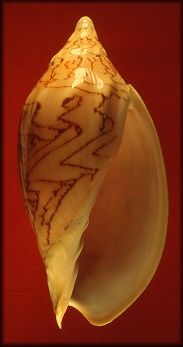| The Mariaemma Volute Rediscovered | |
| By Harry G. Lee | |
|
The world is shrinking as technology facilitates travel, communication, and exploitation of natural resources. Malacology is certainly not exempt from this inexorable "progress." The discovery and retrieval of countless classically "rare" species of shells has, while diluting the historical mystique of these icons, provided enlightenment and pleasure to present day conchologists. How nice it is to simply be able to SEE a Conus gloriamaris, a Callistocypraea leucodon or Leporicypraea valentia, and a Pholadomya candida. Jet travel, SCUBA, tangle nets have changed the hobby in one quick generation. Precisely twenty-five years ago Peter Dance (1969) produced his classic Rare Shells, which illustrated and chronicled fifty classic rarities. Of these, only two, "Ancilla" vernedei and Aulica chrysostoma are beyond the means of a well-heeled connoisseur - and even this assertion is arguable. The following brief account will serve as requiem for another fallen icon. |
|
 |
 |
| Based on a
single specimen, "most probably from some of the Malaya
Islands, Singapore being merely the entry port," The British
malacologist, J.E. Gray, described a 140 mm. Volute which he
named Scapha mariaemma
in 1858. Until approximately two years ago, malacologists had not
laid eyes on this species. By way of Singapore, and through the
kind offices of Dr. Pete Stimpson, I have obtained a specimen of
this beautiful and elusive natural history object. The
accompanying illustration depicts this specimen which may have
been originally collected near the coast of Sulawesi (once
Celebes), Indonesia. The shell is porcellaneous, with a pale orange-cream ground color with wavy axial chocolate brown lines which tend to produce a tent-like pattern. It measures 145.2 mm. in length and 63.8 mm. in breath. The protoconch is pupiform, 4.0 whorls, and is smooth. I have exhibited the specimen twice, at the Jacksonville Shell Club show in August 1994 and the next month at Orlando. There it failed to receive even a notice of honorable mention. Sic transit gloria. |
|